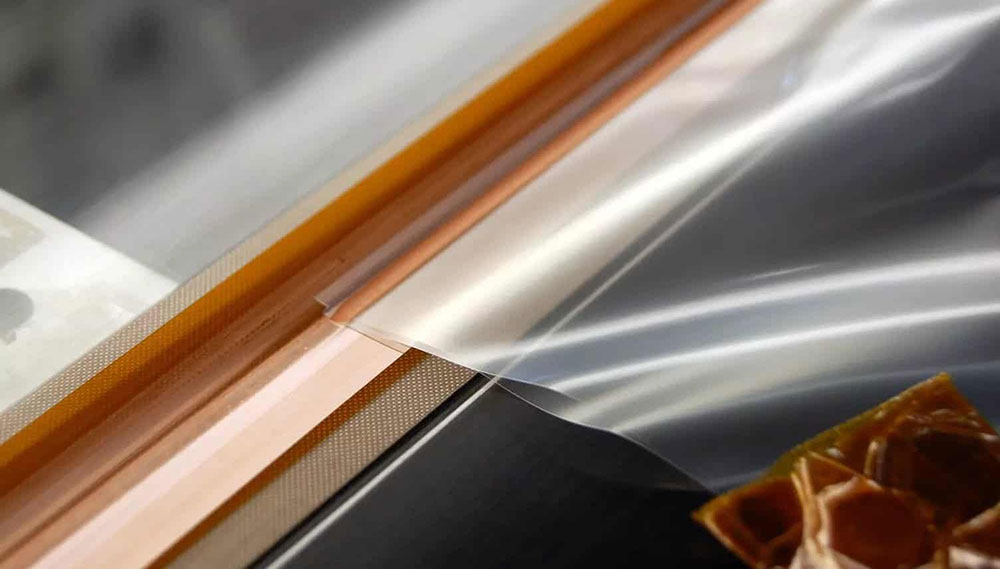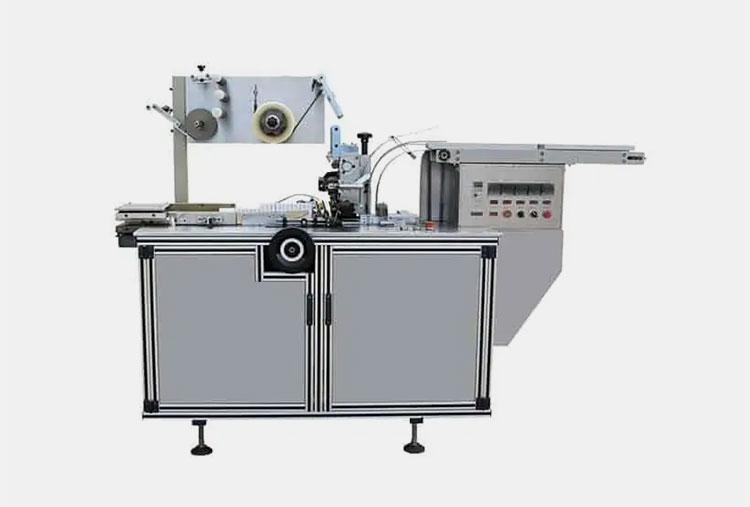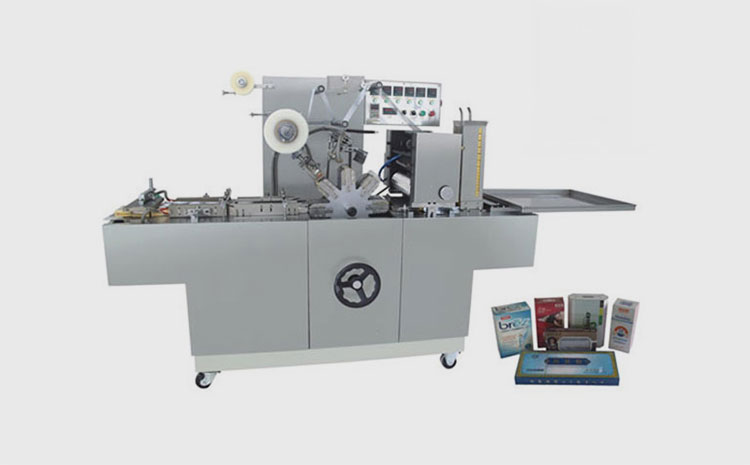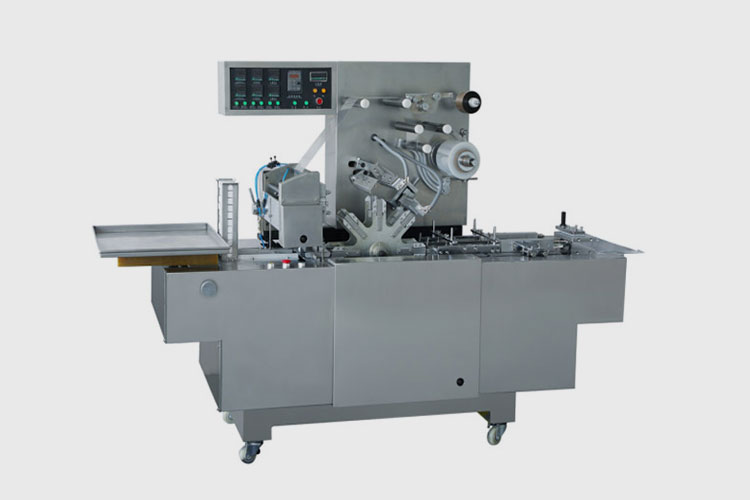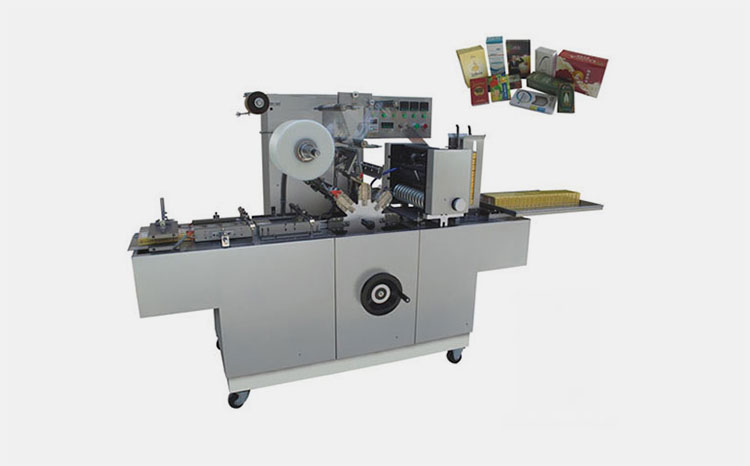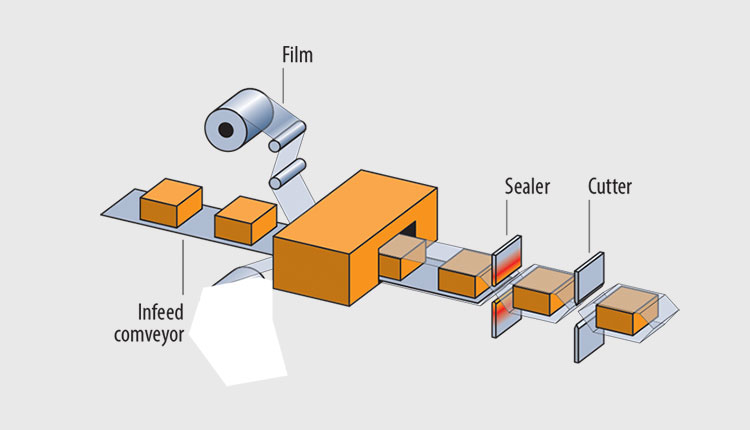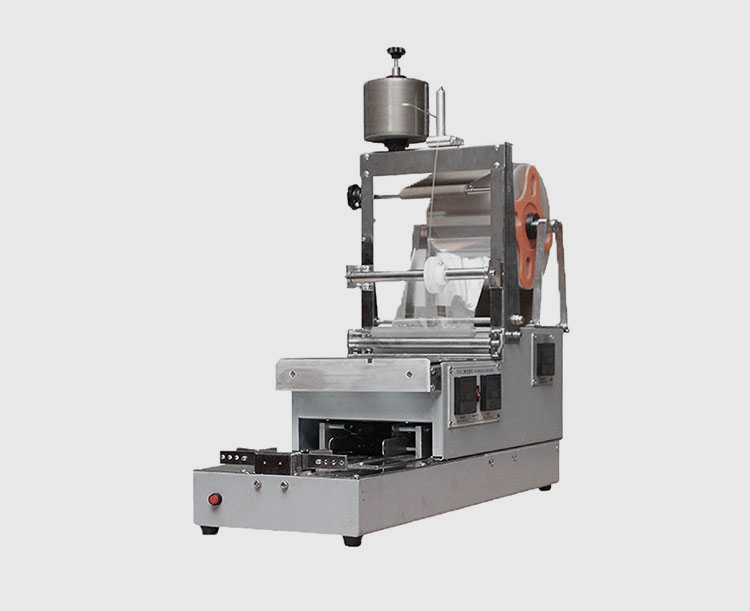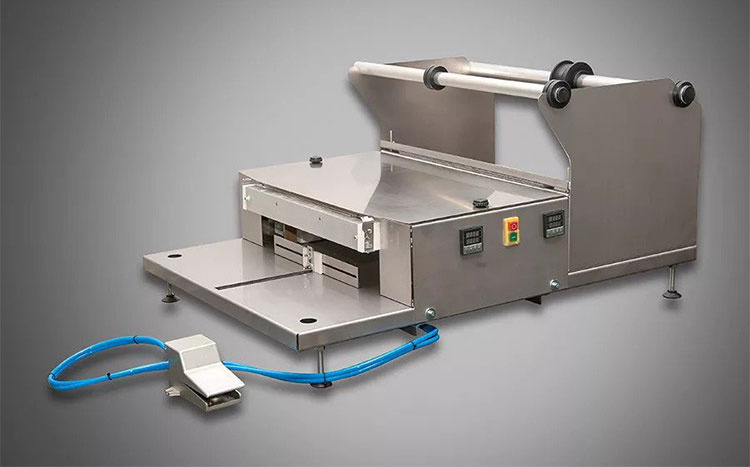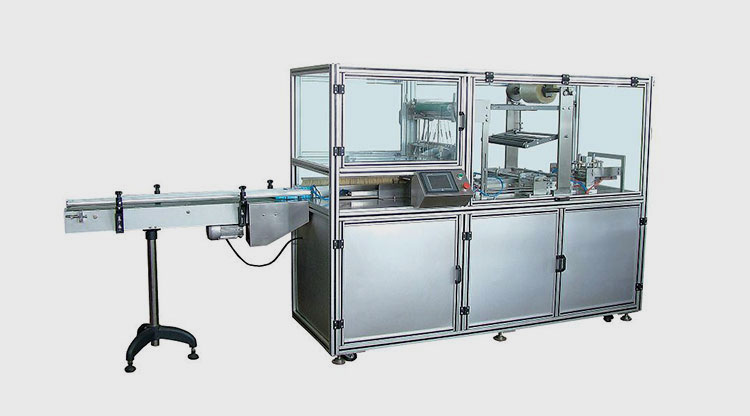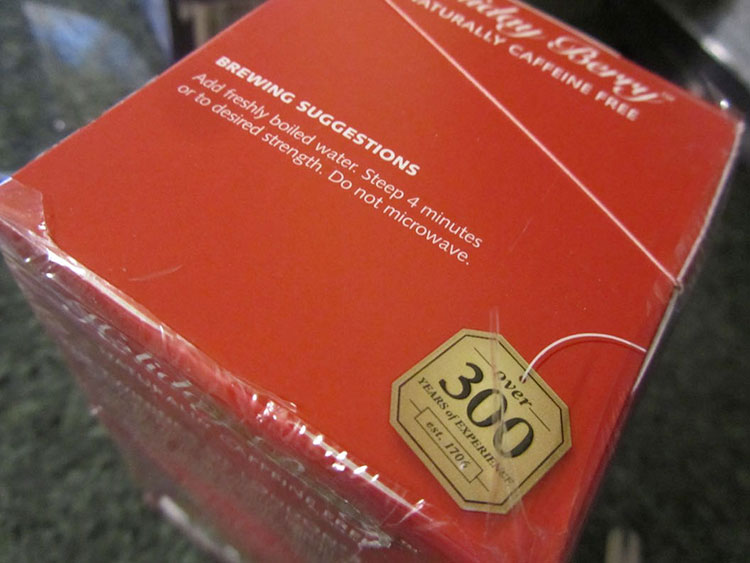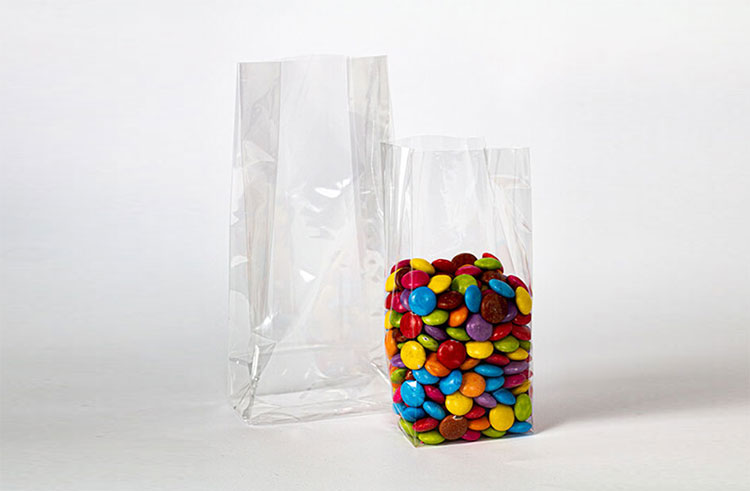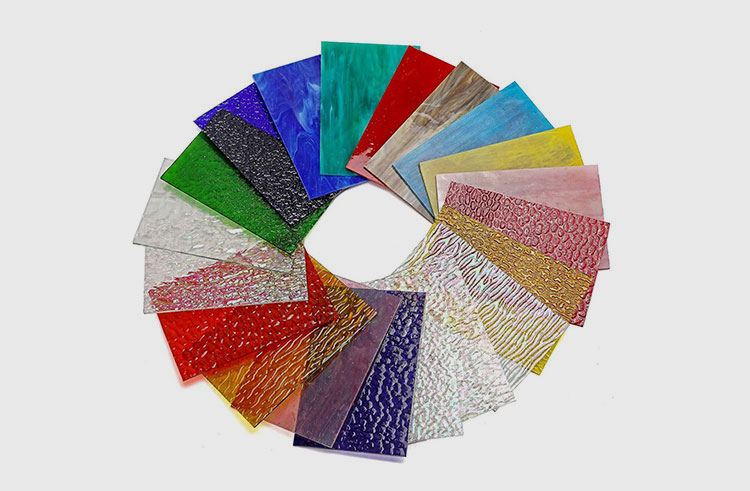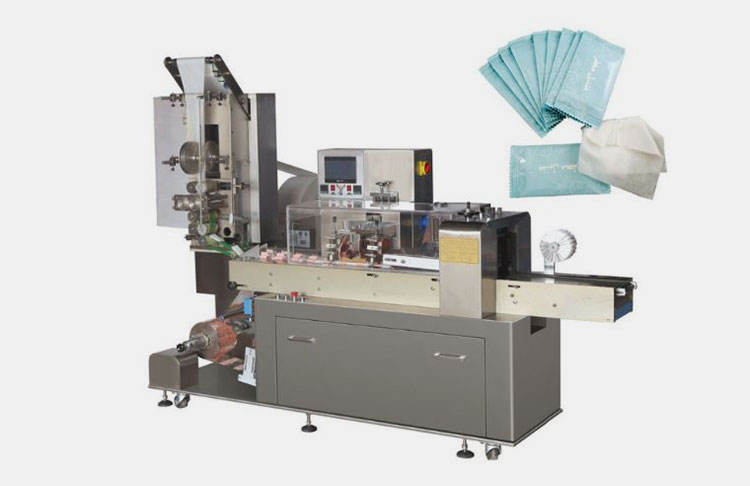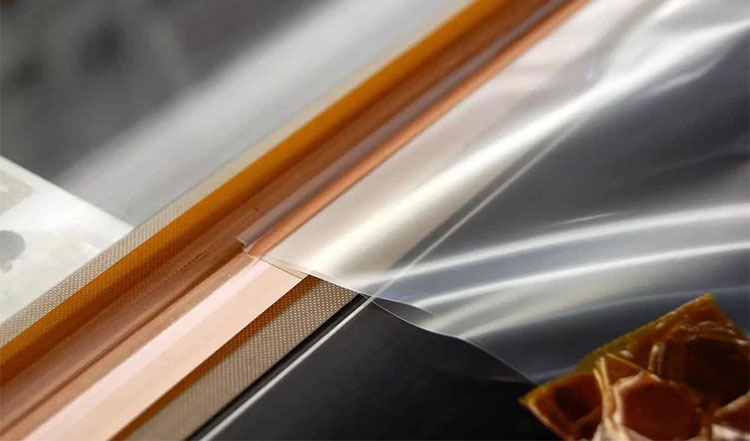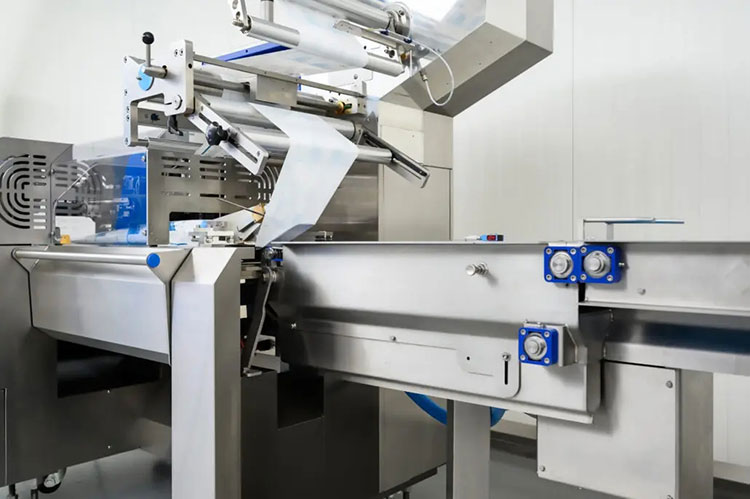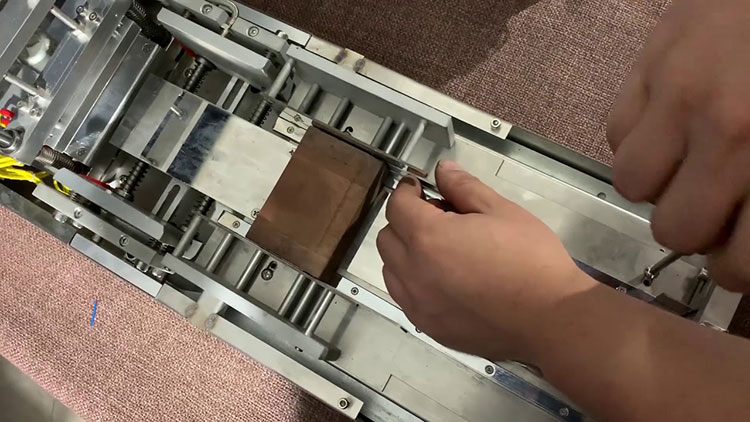Cellophane Machine: The Complete Buying Guide In 2025
Cellophane Machine: The Complete Buying Guide In 2025
Quality and efficiency are key as the world becomes more advanced in the packaging landscape. The cellophane machine is a type of kit that has totally revolutionized the packaging business.
Ever since, cellophane machines have been widely adopted into many industries from food products through to pharmaceuticals thus becoming a basic machinery tool. Also, finding out how cellophane machines work can help you a great deal if you genuinely want to make the most of your packaging processes.
In this blog, you will elaborate on the cellophane machine, its parts, the way it works, its benefits, and why you should get one for yourself. So, let's get started!
1.What Is A Cellophane Machine?
A Cellophane Machine-Photo credits: Renuka Packaging Machine and Equipment
These are machines that designed to automate the process of packaging different products with cellophane film. They can wrap:
- Individual items
- Multi-packs
- Pallets
The cellophane machines thus provide a transparent, moisture-resistant, and tamper-evident layer in the process. They come in various configurations, including:
- Manual Cellophane Machines.
- Semi-automatic Cellophane Machines.
- Fully automatic Cellophane Machines.
Each of these cellophane machines is suited for different scales of operation.
2.What Are The Components Of A Cellophane Machine?
Components of a Cellophane Machine-Photo credits: dchpack
Unwinding Unit
The unwinding unit is responsible for feeding the cellophane film into the machine. It typically includes:
Roll Holders: Secure the roll of cellophane film.
Tension Controls: Ensure that the film is fed consistently and without wrinkles.
Guide Rollers: Help direct the film smoothly into the machine.
Cutting Mechanism
This component cuts the cellophane film to the required size and shape. It consists of:
Cutting Blades/Knives: Sharp edges that slice through the film.
Sensors: Detect the film's position to ensure precise cuts.
Adjustable Guides: Allow for customization of the film size.
Feeding System
The feeding system moves the cut pieces of cellophane to the wrapping section. Key parts include:
Conveyor Belts: Transport the film through different stages of the machine.
Feed Rollers: Push the film along the conveyor belt.
Alignment Devices: Ensure that the film stays properly aligned during transit.
Folding Unit
This section folds the cellophane accurately around the product. It is composed of:
Folding Plates: Direct the film to fold at specific angles.
Guide Rails: Maintain film alignment while folding.
Creasing Tools: Create sharp, precise folds for a professional finish.
Sealing System
The sealing system secures the folded cellophane around the product using heat or adhesives. It includes:
Sealing Bars: Apply heat to fuse the edges of the film together.
Pressure Rollers: Ensure a tight seal by pressing the film edges firmly.
Temperature Controls: Regulate the heat applied to prevent film damage.
Control Panel
The control panel is also another component of the cellophane machine which features the following:
Touchscreen Display: Provides real-time information and controls.
Buttons and Switches: Enable manual adjustments and operations.
Safety Indicators: Alert operators to any issues or malfunctions.
Drive System
The drive system powers the machine, ensuring smooth and efficient operation. It consists of:
Motors: Generate the necessary power to run various components.
Gearboxes: Adjust the speed and torque of the motors for optimal performance.
Belts and Pulleys: Transfer power from the motors to other machine parts.
Product Feeder
This component places the products onto the film for wrapping. It typically includes:
Feed Trays: Hold the products in place.
Timing Mechanisms: Coordinate the placement of products with the film feeding.
Sensors: Detect the presence of products to ensure accurate placement.
Discharge Unit
The discharge unit removes the wrapped products from the machine, ready for packaging or shipping. It consists of:
Ejector Arms: Push the wrapped products off the conveyor belt.
Exit Rollers: Guide the products out of the machine.
Collection Trays: Hold the finished products for easy retrieval.
3.What Are The Benefits Of A Cellophane Machine?
- Provides an attractive and professional packaging solution
- Offers excellent protection against moisture, dust, and other contaminants
- Cellophane film is biodegradable and environmentally friendly
- Can be used to wrap products of various sizes and shapes
- Allows for printing on the film for branding or product information purposes
4.What Are The Applications Of A Cellophane Machine?
Applications of a Cellophane Machine-Photo credits: poma
Here are a few examples of applications of cellophane machines:
Food Industry
In this sector of food, it is used from wrapping chocolates and candies to bakery items and fresh produce with the film's barrier properties that maintain product freshness and extending shelf life.
Cosmetics and Personal Care
With the cellophane wrap, a touch of elegance to cosmetics and personal care products is added making them more appealing to consumers. The wrap also provides an additional layer of protection against contaminants.
Gift and Stationery
Attractiveness and secure packaging are enhanced with the cellophane wrap films. The transparency of the wrap allows customers to view the product while keeping it protected.
Pharmaceuticals
In this sensitive industry, this special equipment helps maintain the integrity of medicinal products by providing a protective barrier against any form of contaminants or moisture.
5.What Are The Working Principles Of A Cellophane Machine?
How a Cellophane Machine Works-Photo credits: allpackchina
Feeding the Film
The process begins with feeding the cellophane film into the machine. The film is typically loaded onto a roll holder, which ensures smooth and continuous supply during the wrapping process. Advanced models may have automated film loading systems that minimize manual intervention.
Product Placement
In this stage, the product to be wrapped is placed on the machine’s conveyor belt or in a designated holding area. Normally in fully automatic machines, an integrated conveyor system aligns and positions the products accurately for wrapping.
Film Dispensing and Wrapping
As the product is moving along with the conveyor belt, the machine dispenses the cellophane film, wrapping it around the product. This happens with the help of rollers and guides that ensure the film is tightly and uniformly applied. Though, the wrapping process can vary depending on the machine type which can be;
L-Sealers: These machines use an L-shaped sealing bar to cut and seal the film around the product, creating a neat and tight wrap.
Flow Wrappers: These machines use a horizontal feed system, where the product is enveloped in a continuous film and then sealed.
Sealing
Depending on the type of cellophane machine you are handling, sealing can be accomplished through heat sealing, ultrasonic sealing, or adhesive sealing. Heat sealing is the most common method, where heated sealing bars or wires fuse the film layers together.
Cutting and Trimming
Once sealed, the film must be cut to separate the wrapped product from the continuous film roll. The cutting mechanism, often integrated with the sealing unit, ensures precise and clean cuts. Excess film is trimmed away to give the final package a polished look.
Cooling and Shaping
After sealing and cutting, some machines pass the wrapped product through a cooling section. This helps set the seals and gives the package its final shape. Additional shaping or folding mechanisms might be employed to create a tighter, more appealing wrap.
6.What Type Of Cellophane Machines Are Available In The Market?
Its quite important to comprehend different types of cellophane machines. This will guide you on choosing the one that best fits your needs. Here are the most common types available:
Manual Cellophane Machines
A Manual Cellophane Machine-Photo credits: lagopus
These are basic machines that require human operation for most tasks. They are majorly used under small-scale operations where automation is not a priority.
Semi-Automatic Cellophane Machines
A Semi-automatic Cellophane Machine-Photo credits: solstice-inc
Semi-automatic cellophane machines have automated functions that require minimum human intervention compared to the manual type. They strike a balance between manual and fully automatic cellophane machines and are ideal for mid-sized businesses.
Fully Automatic Cellophane Machines
A Fully Automatic Cellophane Machine-Photo credits: bmmachines
Fully-automatic cellophane machines are fully advanced machines that handle the entire wrapping process with minimal human intervention. They are designed for large-scale operations and offer the highest efficiency and productivity.
7.What Type Of Products Can Be Packaged Using A Cellophane Machine?
Food Products
Food Products Packaged Using a Cellophane Machine-Photo credits: ytpackingmachine
Baked Goods
They offer an airtight seal which help in keeping these flavoursome treats in a perfect way for longer duration of time. Being transparent is another advantage to using cellophane, as consumers can literally see the product, adding value to the product because customers see what they are getting and makes it appear more desirable on store shelves.
Candies and Chocolates
Cellophane packaging for candies and chocolates is moisture-resistant, a hard house that keeps this material hygienic and stops the ruin of ingredients (like food or drug) because of humidity.
Nuts and Dried Fruits
Cellophane is also used to pack non-perishable food items such as nuts, and some dry fruits because it is light in weight, and have good air as well as moisture barrier properties.
While it does look like it should work due to the airtight seal this method has it will keep the products fresh and not contaminated and it also significantly increases the shelf life which many a health-conscious consumer is enticed by.
Beauty and Personal care Items
Beauty and Personal Care Products-Photo credits: ekatrahandmade
Soaps
Both artisanal and commercial soap makers may use cellophane wrapping to maintain a clean and attractive appearance of the product. Its clear format displays the detailed design and colour of the soaps, making it more buoyant on the shelf.
Beauty Products
Cellophane is an excellent choice for attractive packaging of lotions, creams, and makeup kits. It not only ensures the products reach the customers just as they should without any damage but also adding a touch of professionalism which has also become a market trend now.
Perfumes
Perfume bottles cellophane wrap over to avoid dust and from getting accidental breakings. The luxury aspect of cellophane-wrapped perfumes, packaged so exquisitely, also attracts high-net-worth consumers.
Pharmaceuticals
Pharmaceuticals Packaged Using Cellophane Machine-Photo credits: eBay
The pharmaceutical industry absolute detection of purity and cleanliness when it comes to its products. Some common products pack with cellophane machines are pharmaceutical stuffs to keep them sterile and not harmful to health.
Tablets and Capsules
Tablets and Capsules-Photo credits: olivaclinic
Cellophane wrapping provides an additional layer of protection for tablets and capsules, preventing them from being exposed to air, moisture, and contaminants. This helps in maintaining their efficacy and extending their shelf life.
Medical Devices
Medical Devices-Photo Credits: The Cello King
Medical devices can be shipped with additional protection by individual wrapping in cellophane using a cellophane machine. This prevents air and moisture from external effects.
8.What Type Of Materials Can Be Used With A Cellophane Machine?
Materials Used With a Cellophane Machine-Photo credits: elnavidon
Traditional Cellophane
Standard Cellophane
Cellophane itself remains a popular choice. It is biodegradable, meeting the growing demand for environmentally friendly packaging. The material is also known for its superior clarity and ability to preserve product freshness by forming a moisture barrier. Standard cellophane is often used for products such as baked goods, confectionery and fresh produce.
Coated Cellophane
Coated cellophane is standard cellophane that has an additional coating of polymer or wax that increases the barrier effect so that it can be used for items that still need an extra degree of protection from moisture and oxygen. This extends the shelf life of perishable foods and is suitable for specialty foods and pharmaceuticals.
Modern Substitutes for Cellophane
Polypropylene
Polypropylene also referred to as (PP) is tough and immune to a very wide range of chemical solvents, bases and acids. PP film comes in handy when sealing numerous types of cargos, including chips and nuts as well as electronic commodities. The glossy transparent film is suitable for packaging luxury consumer products.
Polyethylene
Another substitute material that can be used with cellophane equipment. It is present in different forms such as:
- Low-density polyethylene
- Linear low-density polyethylene
- High-density polyethylene
PE is remarkably flexible and strong. PE films are widely utilized in foodstuffs wrapping and packing household items, also in industrial products packaging.
Biaxially Oriented Polypropylene
The most important film that exists is BOPP, which has polypropylene extended in the lengthwise and breadth-wise direction. It is transparent because of its excellent mechanical and optical properties as well as oil and fat resistance.
Polyvinyl Chloride (PVC)
Moreover, it carries a large amount of shrinkage with clarity being high on almost all packs with this feature signifying tamper evidence within a pack; bottles or jars with shrink bands on them are usually sealed using this material amongst others like toys wrapping for consumer electronics.
Polyester (PET)
This film is known for its tough tensile strength, heat stability, moisture and gas resistances hence it is often used to package foodstuff requiring sterility along with prolonged shelf life such as microwave meals and pharmaceutical items. Also, PET can be recycled that’s why more environmental conscious consumers look for PET packages when they are shopping.
Specialized Films
Coated Films
Film lamination allows combining of two or more different materials into one to better the overall performance properties. For instance, laminating PET and PE together provides both high strength and excellent barrier properties which are good for packing coffee or medical supplies.
Vacuum Metallizing Films
These types of films have a coat made up of thin metal layer, usually aluminium, placed on their surface. This makes these films look attractive and shiny as well as increasing their resistance to light, water vapor, and oxygen. Snack food items, pet foods and pharmaceuticals are common examples that uses metallized films.
Degradable Films
With growing emphasis on environmental sustainability, biodegradable films such as polylactic acid (PLA) based biopolymers have gained much popularity.
These films were designed for faster breakdown in composting conditions thus minimizing the environmental effects associated with them. Appropriate applications include fresh produce packaging and disposable items among others.
How can you choose the Right Material amongst the above? Materials Used in Cellophane Machines-Photo credits: GoSupps
Selecting the appropriate material for use with a cellophane machine depends on several factors such as:
Product Requirements:
Consider the nature of the product being wrapped. Food items may require materials with high barrier properties, while electronics might need anti-static films.
Sustainability Goals:
If eco-friendliness is a priority, then opt in for biodegradable or recyclable materials.
Cost Constraints:
Balance the costs of materials with their benefits. While some high-performance films may be more expensive, they could offer long-term savings through reduced waste and improved product protection.
Machine Compatibility:
Ensure the chosen material is compatible with your specific cellophane machine. Not all machines are designed to handle every type of film, so check manufacturer guidelines.
9.What Factors Should You Consider Before Investing In A Cellophane Machine?
Here are some of the factors to consider before investing in a cellophane machine:
Type of Cellophane Machine
There are different types of cellophane machines designed for various applications. These include:
Overwrapping Machines: this cellophane equipment is ideal for wrapping boxes and rectangular products, thus applicable in a wide area.
Flow Wrapping Machines: they are suitable for packaging individual items or trays with a continuous reel of cellophane, commonly used for snacks and confectionery.
Shrink Wrapping Machines: These machines use heat to shrink cellophane around the product, providing a tight and secure package, perfect for wrapping multiple items.
Production Capacity
Evaluating the production capacity of the machine is crucial to ensure it can handle your output efficiently. It is typically measured in terms of items wrapped per minute (IPM). Consider both your current and projected production volumes
Machine Versatility
Most of these cellophane machines come with adjustable settings and also interchangeable components that allow for a wide range of packaging options thus providing long-term value by accommodating various packaging needs as your business grows. If you plan to wrap different types and sizes of products then versatility is a crucial element in this.
Quality of Wrapping
Know the machine’s ability to produce tight, wrinkle-free wraps with uniform seals. High-quality wrapping not only enhances the appearance of your products but also provides better protection against external factors well known such as; moisture and any form of contamination.
Ease of Use and Maintenance
User-friendly machines with intuitive controls and easy-to-follow instructions have always reduced training time for your staff and minimized operational errors. Considering also the maintenance requirements of the machine, ensure to acquire one that is easy to clean and maintain to reduce downtime and extend the lifespan of the equipment.
Cost vs Return on Investment (ROI)
Cost should be weighed down against the potential ROI. Consider;
- The initial purchase prices
- Operating costs
- Potential savings from improved efficiency
- Reduced labour.
A higher upfront cost may be justified if the machine offers superior performance and durability which in turn lead to long-term savings and increased productivity.
Supplier Support and Warranty
Reliable after-sales support and a comprehensive warranty are critical when investing in a cellophane machine today. Ensure your supplier offers some these services such as; technical support, training, or readily available spare parts. Good warranties will always protect your investment, provide peace of mind knowing that any issues can be promptly addressed.
Machine Footprint and Space Requirements
The physical size of the machine and the space available in your facility are practical considerations. Measure your available floor space and ensure the machine you choose will fit comfortably without disrupting existing workflows. Compact machines are advantageous for businesses with limited space.
Energy Efficiency
Look for a cellophane machine that offer energy-saving features or are designed to operate efficiently, helping you lower your overall energy consumption.
Compliance with Regulations
Ensure that any kind of this equipment that you may want to invest in complies with relevant industry standards and regulations. This is especially if you operate in highly regulated sectors such as food and pharmaceuticals. Compliance with safety and hygiene standards is essential to avoid legal issues and ensure the safety of your products.
10.What Are Some Of The Problems Associated With The Use Of Cellophane Machines And Their Possible Solutions?
Problems With Cellophane Machine-Photo credits: yidaomachinery
Wrinkle Formation in Wrapping.
Wrinkle Formation in Cellophane Machines-Photo credits: allpackchina
Problem; Wrinkling of the cellophane film as it is wrapped. The packaging is not only visually unappealing but also an indication of improper sealing— leading to possible product contamination and wastage.
Solution:
Machine Calibration: Ensure that the machine is correctly calibrated.
Quality of Cellophane Film: Use high-quality cellophane film with consistent thickness and flexibility.
Regular Maintenance: Regularly check and maintain the machine components, especially the rollers and tensioners, to ensure they are functioning correctly.
Inconsistent Heat Sealing.
Inconsistent Heat Sealing-Photo Credits:Direct Industry
Problem; A bad sealing job can result in a seal that may open during distribution or storage when being transported and thus cause the package to be compromised. Fluctuating temperatures or disparate pressure applications can cause this problem.
Solution:
Temperature Control: Invest in cellophane machines with precise temperature control mechanisms. Each and every time monitoring and adjusting the temperature settings to ensure they remain within the optimal range for the specific cellophane being used is paramount.
Uniform Pressure: Ensure the sealing jaws apply uniform pressure across the entire seal. This might require regular adjustments and maintenance of the sealing components.
Training: Provide thorough training for operators to understand the importance of consistent sealing parameters and how to troubleshoot basic sealing issues.
Film Feeding Issues.
Film Feeding Issue-Photo Credits: soontruemachinery
Problem; hitches in feeding cellophane film could lead to interruptions during packaging resulting to downtime and less effective operations. Common signs include misalignment of the films, tearing and jamming of films.
Solution:
Automated Feed Systems: Use automated feed systems which will appropriately align and feed the film for seamless operation. This system can minimize manual errors from handling while maintaining constant flow of film.
Sensor Integration: Integrate sensors to detect misalignments or jams early.
Regular Inspection: Conduct regular inspections of the feeding mechanism to identify and rectify wear and tear that could lead to feeding issues.
Static Electricity Formation.
Problem; An issue arises with the buildup of static energy which can lead to poor packaging quality due to films sticking together or attracting dust and debris.
Solution:
Anti-Static Devices: Install anti-static devices or ionizers within the cellophane machine to neutralize static build-up on the film.
Controlled Environment: Maintain a controlled environment with proper humidity levels to minimize static electricity generation.
Material Selection: Use cellophane films treated with anti-static agents to reduce the propensity for static build-up.
Machine Downtime.
Machine Downtime Photo credits: tigeratmparts
Problem; Cellophane machines can face technical issues and stop functioning, just like any other machine does due to mechanical failures. Unexpected failures like wear and tear are able to restrict the production schedules of the organization by a great extent in which it operates and operational efficiency.
Solution:
Preventive Maintenance: Implement a robust preventive maintenance schedule that includes regular inspections, lubrication, and replacement of worn-out parts.
Spare Parts Inventory: Maintain an inventory of critical spare parts to ensure quick replacements and minimize downtime.
Operator Training: Train operators to perform routine checks and basic troubleshooting to identify and address minor issues before they escalate.
CONCLUSION
Cellophane machines are quite a tangible player in the packaging industry. There provision of efficient and versatile solutions for wrapping products in the industry remains unmatched. With the few available types of cellophane machines available in the market, its quite easier to choose the right cellophane machine to suit your specific needs and production requirements. Not forgetting proper maintenance and care can ensure the longevity of cellophane machines, making them a valuable investment for any packaging operation. So, if you are looking for an attractive and effective way to package your products, consider using a Aipak China cellophane machine!
Don't forget to share this post!
CONTACT US
Tell us your raw material and project budget to get quotations within 24 hours.
WhatsApp Us: +86 181 7101 8586
The Buyer's Guide
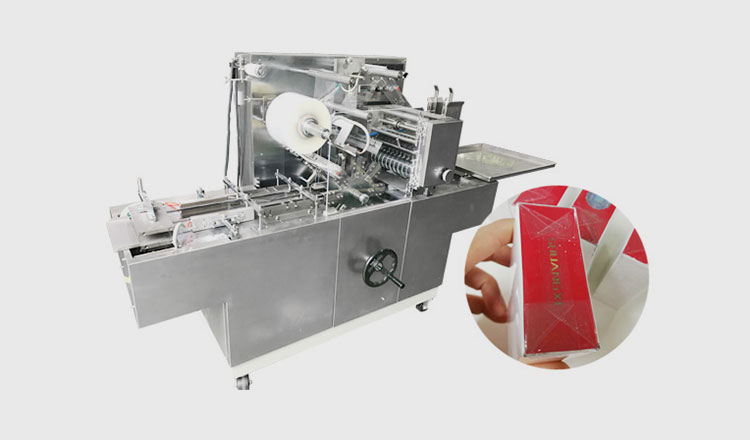
Cellophane Machine: The Complete Buying Guide In 2025 Read More »

